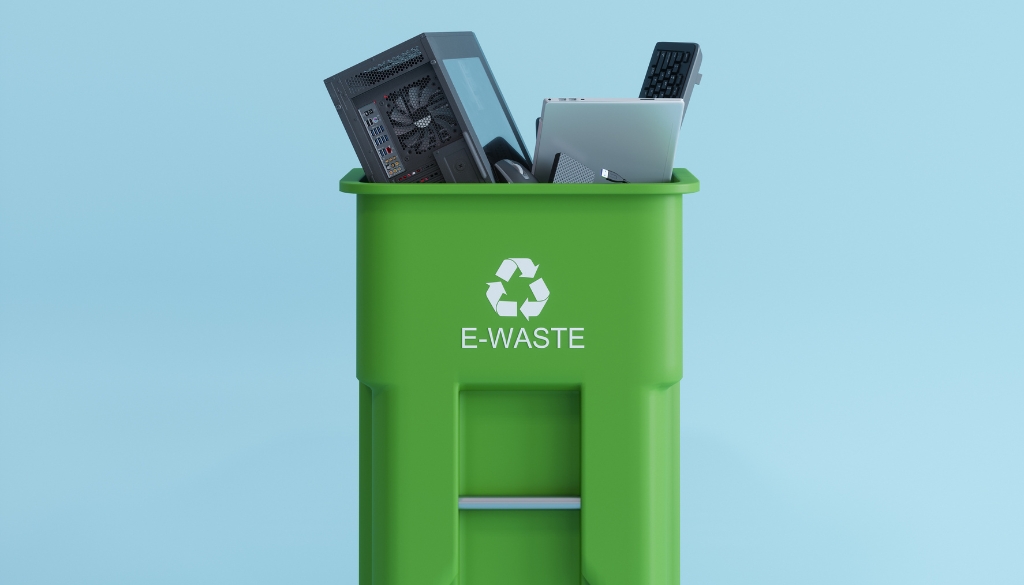In today’s climate of budgetary constraints and demand for demonstrable value, managing IT Asset Disposition (ITAD) and e-waste recycling processes can seem challenging, especially when considering ITAD program costs. But what if these essential processes could be made cost-effective, even potentially profitable, and easily manageable? Dynamic Lifecycle Innovations makes this a reality through our IT asset remarketing and value recovery program, our unique vertically integrated business model, and our groundbreaking carbon calculator.
IT Asset Remarketing And Value Recovery: Turning E-Waste Into Revenue
One of the innovative ways Dynamic offsets your ITAD costs is through our IT asset remarketing and value recovery program. We don’t just recycle; we recognize and leverage the residual value of your old electronics.
When we receive your outdated or unwanted electronics, our expert team identifies items that can be refurbished and resold. This process not only promotes sustainability by extending the life of these devices but also turns potential e-waste into a source of revenue.
After the resale of these refurbished items, we share a portion of the proceeds with you. In this way, your ITAD process transforms from a cost center into a revenue-generating asset.
Integrated Business Model: Streamlining ITAD Program Costs To Enhance Efficiency
Another critical aspect of how Dynamic eases ITAD and e-waste recycling costs is our vertically integrated business model. With us, you don’t have to juggle multiple vendors for different steps of the ITAD process. Our comprehensive, easy to use services cover everything from secure data destruction and compliant recycling to refurbishing and reselling.
This single-vendor solution reduces costs, simplifies communication, and streamlines logistics, resulting in significant time and cost savings for you.
Simplifying ESG Reporting: The Dynamic Carbon Calculator
Our innovative carbon calculator also plays a key role in minimizing your ITAD costs and maximizing ease of use. As part of our dedication to customer alignment and ESG reporting, the calculator provides easy-to-access reports that you don’t have to compile yourself.
Our carbon calculator helps you gain a more precise understanding of how your ITAD programs contribute to your ESG initiatives. The tool automatically tracks your actual material as it’s received and processed, with specific calculations for 29 categories of e-waste (including both whole units and component parts.) This information is refreshed daily, assuring the most up-to-date calculations with no manual data entry. The net output is clear-cut, real-time reporting of potentially avoided scope 3 emissions, readily available 24×7 via our customer portal.
Cost-Effective, Sustainable, And Simple ITAD With Dynamic
Dynamic Lifecycle Innovations offers a revolutionary approach to ITAD and e-waste recycling, one that makes these essential processes cost-effective and straightforward. By turning potential e-waste into revenue, providing comprehensive services under one roof, and offering a revolutionary carbon calculator for easy calculation of potential scope 3 emissions avoidance, we redefine the ITAD landscape for our customers.
We are excited to delve deeper into how we offset ITAD program costs and streamline the process in our complimentary e-book, “Connecting the Dots: From e-Waste to ESG”. This guide discusses how to enhance the value and efficiency of your IT lifecycle, align with ESG principles, and utilize tools like our carbon calculator for better sustainability insights. Download a copy of our e-book and learn how Dynamic Lifecycle Innovations is paving the way for a more cost-effective, efficient, and sustainable ITAD process.
Ready to take the next step? Schedule a demo of our industry-leading carbon calculator today and see for yourself how you can begin to measure, manage, and potentially reduce your scope 3 emissions.
